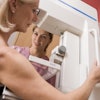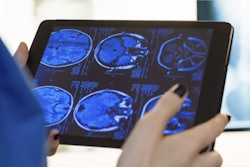
Physicians often make use of their smartphones for clinical purposes and to consult with colleagues, but many are using the devices to send patient information -- including photos of imaging studies -- via insecure messaging methods, according to a new London report published online in BMJ Innovations.
In a survey of physicians and nurses from five hospitals in the U.K. capital, a team led by Mohammad Mobasheri, a PhD candidate and clinical research fellow at Imperial College London (ICL), found that nearly all physician respondents owned a smartphone. More than 90% of the sample judged the devices to be either very useful or useful in performing their daily clinical duties. In a potential cause for concern over security and patient privacy, however, nearly half of the respondents indicated they had used their smartphone camera and picture messaging to send a photo of a wound or an imaging study to a colleague for consultation.
Digital health is an established part of healthcare delivery and represents a truly disruptive innovation for frontline staff, co-author Dr. Dominic King of ICL told AuntMinnieEurope.com.
"Clinicians are currently using a broad range of software like WhatsApp that certainly offers advantages versus existing technologies like a pager, but is far from optimized," he said. "We now need to move to provide bespoke solutions for messaging, image transfer, and task prioritization that are secure, reliable, and effective."
Ubiquitous use of smartphones
As it had become clear to the researchers that they and their colleagues were increasingly using their own smartphones in delivering care and collaborating, the group sought to clarify exactly how smartphones and tablets were being used by doctors and nurses across a number of London hospitals, King said. The team invited all 2,017 doctors and all 4,059 nurses at five hospitals to complete a survey on the ownership rates and clinical uses of smartphones.
There were 287 responses from doctors and 564 from nurses. Of the doctors, 98.9% owned a smartphone and 73.5% also owned a tablet. In contrast, 95.1% of nurses owned a smartphone and 64.7% owned a tablet.
"It is interesting to note that doctors are much more likely to use their phones for work purposes than nurses, and that there are differences between doctors and nurses in the devices they use," King said. "Doctors are much more likely to use the iPhone."
Physicians in particular found their smartphones to be valuable for their work; 92.6% said their smartphones were either useful or very useful in helping them to perform their daily duties, compared with 53.2% of nurses. The difference was statistically significant (p = 0.0001).
| Methods used to send patient-related clinical information with smartphones | ||
| Physicians | Nurses | |
| Short-message script (SMS) | 64.7% | 13.8% |
| App-based messaging (WhatsApp, etc.) | 33.1% | 5.7% |
| Picture messaging (to send pictures of wounds or an imaging study) | 46% | 7.4% |
The differences between the physicians and nurses was statistically significant (p = 0.0001).
Security concerns
Because these messaging methods lack data encryption and necessary security modules, transmitting patient information in this manner is currently unsecure and may result in inadvertent disclosure of highly sensitive and confidential data, particularly if the devices are lost, stolen, or viewed by unauthorized users, according to the researchers.
In another cause for concern, 27.5% of physicians and 3.6% of nurses believed they still had patient-related information on their smartphones. Physicians in particular were interested in adopting secure messaging for transmitting patient-related information to colleagues; 71.6% of physicians expressed a desire for a secure messaging app, compared with 37.2% of nurses. The difference was statistically significant (p = 0.0001).
King said it's clearly useful for doctors, for example, to be able to share and discuss radiological imaging. For example, specialist doctors across different hospitals may be out of the hospital at certain times and be unable to easily look at x-rays and other imaging studies through existing systems, according to King.
"It is far from optimal that doctors share images through their smartphones, but most of us have done so," he said. "I think most people do so without sharing identifiable information, but it clearly raises concerns and we do need to move to optimized and approved solutions."
As for those physicians who utilize nonsecure messaging to send pictures of imaging studies to colleagues, the researchers recommend first seeking guidance on the practice from their institution.
"If you are going to share pictures through standard messaging platforms then you need to consider what would happen if someone got access to your phone," King said. "Is there information that could identify your patient or cause you embarrassment because of comments you have made? It is critical that all identifiable information is removed, so take a picture of the x-ray without the patient's details being visible, and where possible, always make sure you get consent from the patient to take a picture and send."
Healthcare organizations must also develop strategies and policies designed to support the safe and secure use of these technologies by front-line staff, according to the researchers.


















